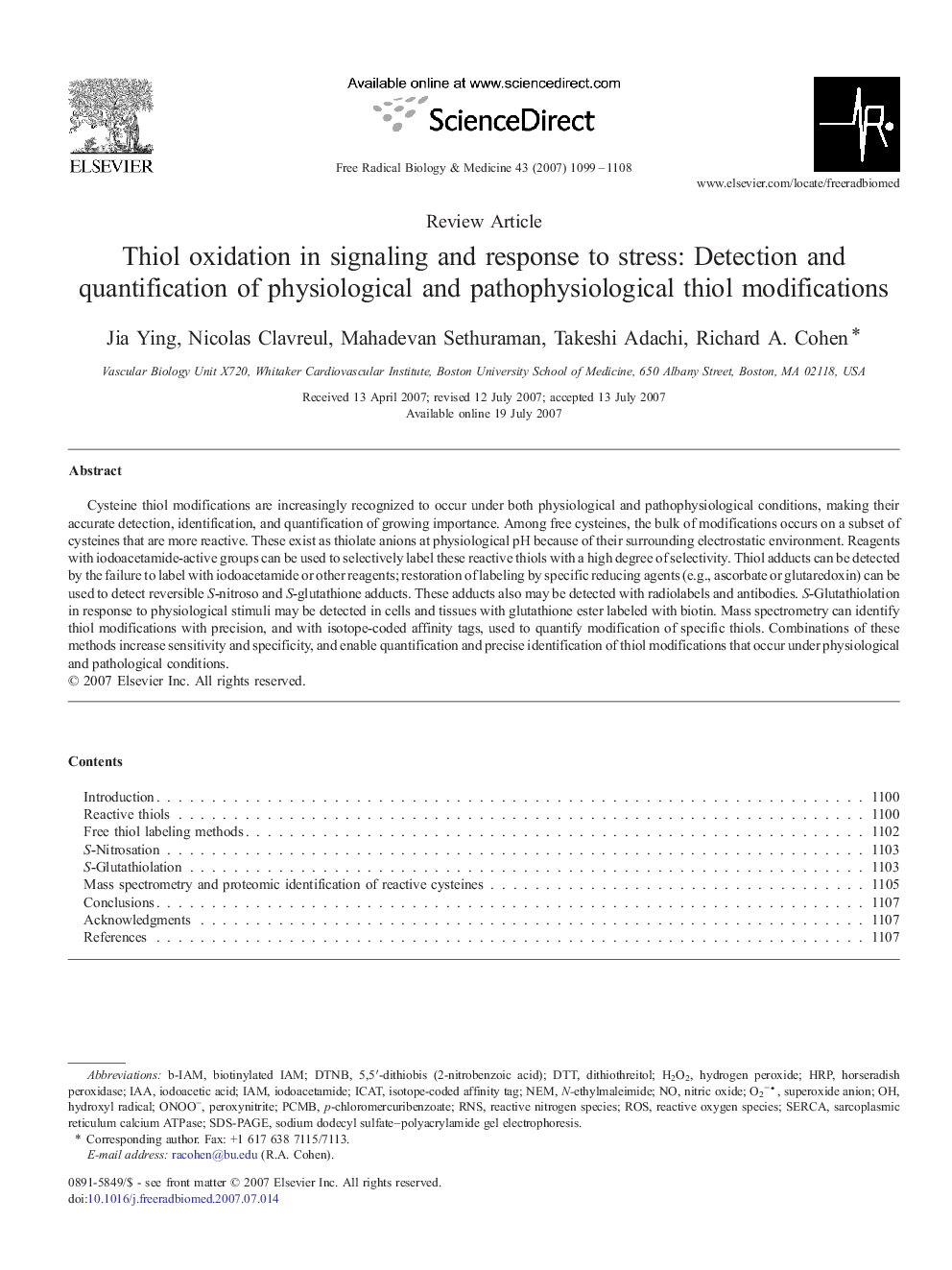| کد مقاله | کد نشریه | سال انتشار | مقاله انگلیسی | نسخه تمام متن |
|---|---|---|---|---|
| 1911600 | 1046824 | 2007 | 10 صفحه PDF | دانلود رایگان |

Cysteine thiol modifications are increasingly recognized to occur under both physiological and pathophysiological conditions, making their accurate detection, identification, and quantification of growing importance. Among free cysteines, the bulk of modifications occurs on a subset of cysteines that are more reactive. These exist as thiolate anions at physiological pH because of their surrounding electrostatic environment. Reagents with iodoacetamide-active groups can be used to selectively label these reactive thiols with a high degree of selectivity. Thiol adducts can be detected by the failure to label with iodoacetamide or other reagents; restoration of labeling by specific reducing agents (e.g., ascorbate or glutaredoxin) can be used to detect reversible S-nitroso and S-glutathione adducts. These adducts also may be detected with radiolabels and antibodies. S-Glutathiolation in response to physiological stimuli may be detected in cells and tissues with glutathione ester labeled with biotin. Mass spectrometry can identify thiol modifications with precision, and with isotope-coded affinity tags, used to quantify modification of specific thiols. Combinations of these methods increase sensitivity and specificity, and enable quantification and precise identification of thiol modifications that occur under physiological and pathological conditions.
Journal: Free Radical Biology and Medicine - Volume 43, Issue 8, 15 October 2007, Pages 1099–1108